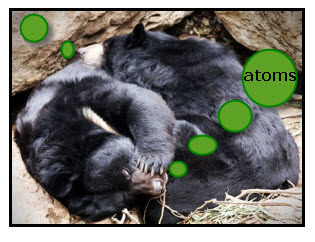 I like reading about the history of science. Some of the ideas of scientist of the past seems so silly.
I like reading about the history of science. Some of the ideas of scientist of the past seems so silly.
How could such smart people have such dumb ideas?
But, then I wonder if the scientific facts we are learning today will seem silly to people in the future.
Maybe!
But for now let’s have some fun with our ancestors scientific ideas about matter (what everything is made of).
In 580 B.C., the Greek philosopher Thales (625?-546?) introduced the idea that all matter was made of one element, water.
Element is from the latin word, elementium (part of a whole).
WATER?
The Greek philosopher Empedocles (490?-430 B.C.) didn’t agree with Thales. Empedocles thought there were four elements:
water, air, earth, and fire
Today: The parts making up elements are called ATOMS.
Empedocles believed that two forces, called love and hate, act upon these elements, combining and separating them into an infinite number of different forms.
Today: The connections between atoms are called Bonds.
Around 440 B.C. the Greek philosopher Leucippus (450-370 B.C.) suggested that the four elements were made of tiny, indivisible parts.
Later a pupil of Democritus (460-370 B.C.) further developed Leucippus’ idea and called the parts of an element atoms. As usual, Democritus is generally given credit for this idea.
WOW! Now that was a long time ago.
The Greek philosophers that agreed with Democritus about the existence of atoms were given the title of “Atomists”.
I don’t think this was a title of honor.
Scientist had no way of determining if atoms existed or how they looked. So they made guesses.
Wait a minute–GUESSED??
Scientists NEVER GUESS, instead scientists form HYPOTHESIS.
What’s the difference? Guessing or forming a hypothesis? Isn’t a hypothesis just a fancy way of saying they guessed?
A hypothesis is often defined as an educated guess. I’ve used this definition. But, I am thinking that a better definition might be a prediction based on information collected. In other words, when you give a hypothesis about something, you need to have some reason.
The Big Guess–(The Hypothesis About the Characteristics of Atoms)
The guess was that atoms were small, hard particles with no empty space inside and all atoms were made of the same material. Atomists thought that atoms differed only in shape and their shape explained their properties.
Things that hurt had to be made up of atoms with a sharp pointed or jagged shape.
Democritus’ Atomic Theory–
* atoms could not be destroyed but could change into other kinds of atoms.
* infinite number of kinds of atoms so there were an infinite number of kinds of elements.
* Hard materials have rough, prickly atoms that stick together. (Sounds like velcro surfaces.)
* Liquids have round, smooth atoms that slide over one another.
* Smell is due to atoms entering and touching the inside of the nose. Rough atoms scratch and hurt the lining of the nose.
* Fire hurts because fire atoms must be have sharp points.
* Sleep is caused by atoms leaving the body, just like the sleeping bears in the photo above which was taken by Photos8.com
* Death is the result of the loss of too many atoms. UUM! You must admit that this makes sense, since they would see someone stop breathing. They had lost tooooo many atoms.
20% Discount Code AFF20